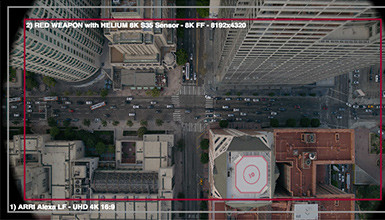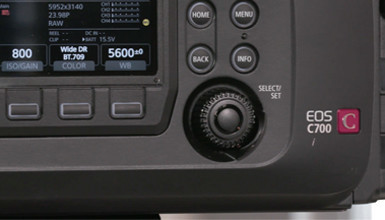Canon's entry into the full format field takes the form of an upgraded C700 body, which houses a newly-designed 5.9K full format sensor (38.1mm x 20.1mm, 43.1mm diagonal) in the 17:9 DCI aspect ratio. The camera shoots Canon's XF-AVC codec and Apple ProRes, as well as Canon Cinema RAW to an optional Codex recorder that integrates with the camera body.
Some unique features with Canon's implementation of full format include the ability to downsample the full 5.9K image to 4K or HD, allowing you to create files at deliverable resolutions straight out of the camera and providing the boost to image quality that comes with scaling down. You also have the ability to shoot in windowed 4K and 2K modes, which handily pencil out to the diagonals of 3-perf Super 35 and Super 16 for maximum flexibility with existing lenses of varying image circles. The C700 FF is available with a standard PL mount as well as, of course, Canon's own EF mount. When used with EF lenses, the camera supports Canon's Dual Pixel autofocus technology providing the same best-in-class autofocus features familiar to users of the C200 and C300 Mk II. The C700 FF will be available as both a distinct model and as an upgrade for existing C700 owners.
Canon also announced a new focal length for their popular CN-E line of cinema prime lenses. The new 20mm T1.5, as with other CN-E primes, features full format coverage, 300-degree focus rotation, and 11 iris blades for smooth, circular out-of-focus highlights. The new lens fits nicely into the line between the existing 14mm and 24mm focal lengths and matches other CN-E lenses in terms of dimensions, weight and front diameter (114mm) for quick and easy changes on set.
















